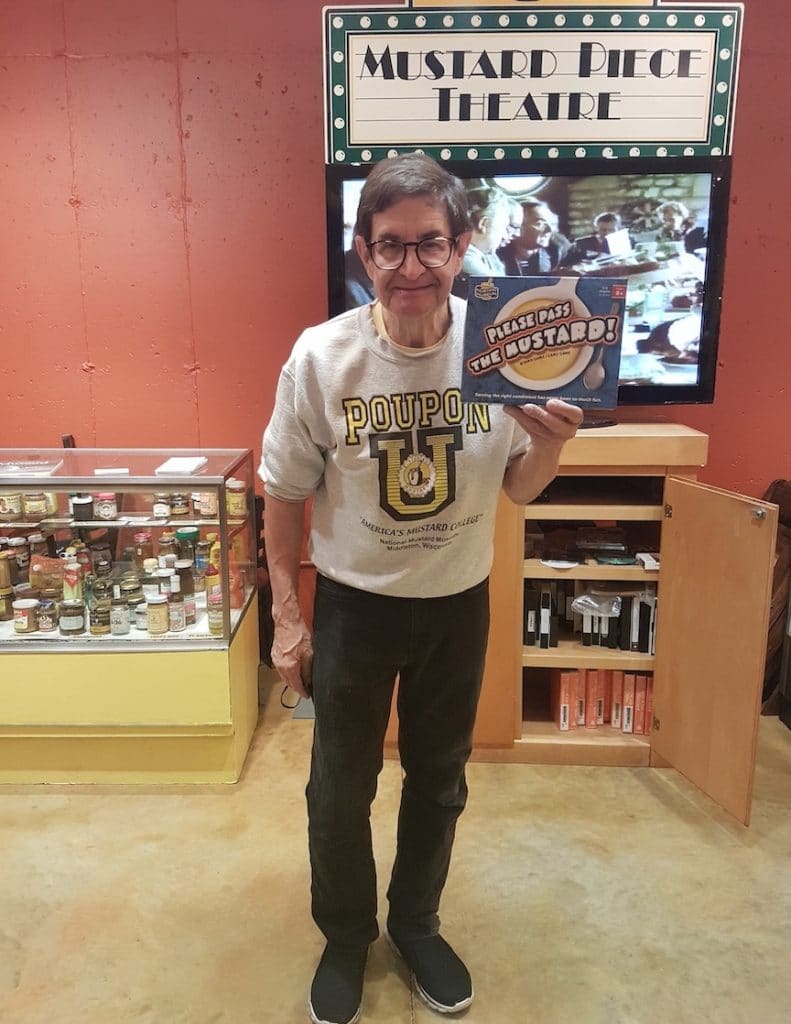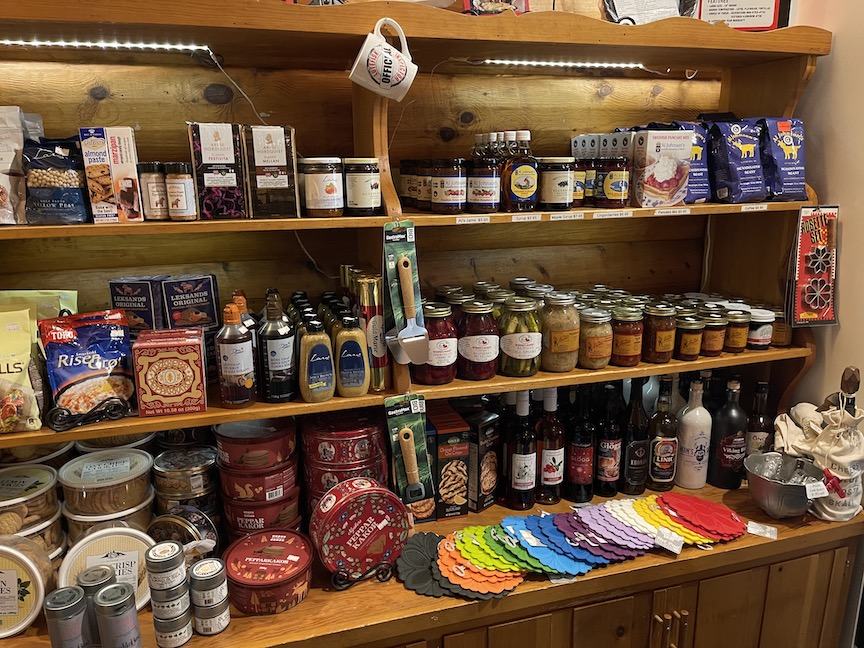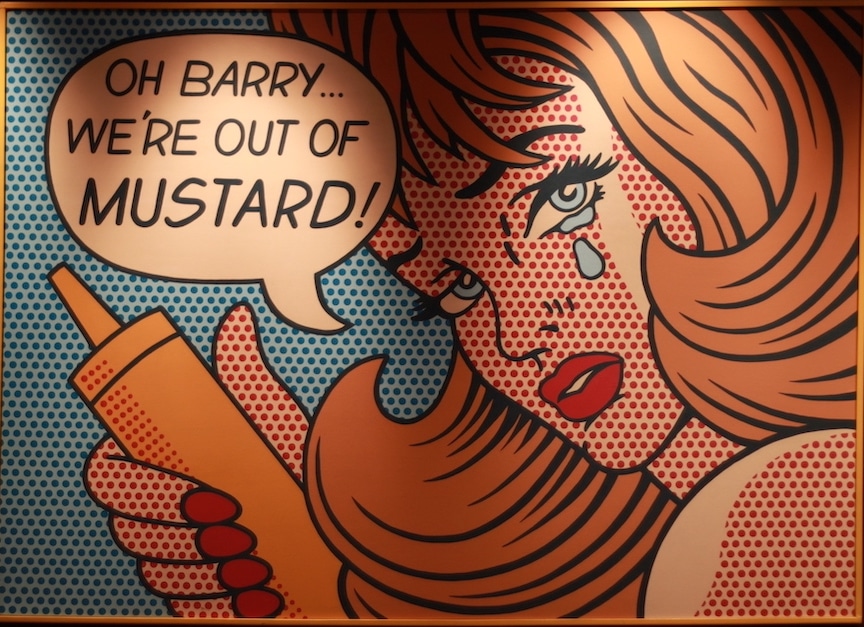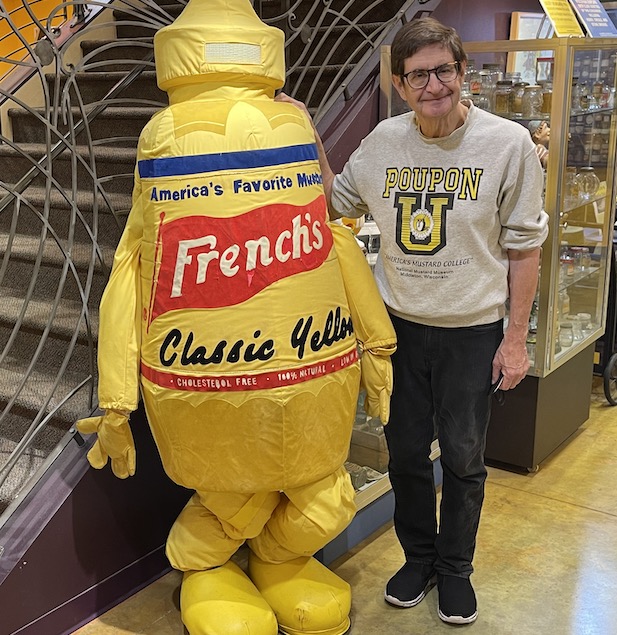
Barry Levenson takes the stage of the Mustard Piece Theater in Middleton, WI to urge visitors to select mustard instead of ketchup, salsa or, shudder, mayonnaise. Levenson is the curator of the Mustard Museum and CMO (Chief Mustard Officer) of Poupon U. Photo by David DeVoss
By David DeVoss
You’re familiar with Purdue and Princeton. You know about Penn State and Pitt. But are you aware of Poupon U?
It’s a small culinary institute located in Middleton, six miles outside Madison, WI. You won’t find it on U.S. News & World Report’s Best College Rankings but, rest assured, all its students can cut the mustard.
Founded in 1992, Poupon is more widely known for its Mustard Museum and the Mustard Piece Theater. Both are creations of Barry Levenson, a former Wisconsin Asst. Attorney General, who teaches food law at the University of Wisconsin.
Ketchup is the Foe
Author of Habeas Codfish: Reflections of Food and the Law, Levenson describes himself as “a recovering lawyer,” but in actual fact he is a condiment savant who proudly displays his biases. “We are up against an ignoble foe whose name is ketchup,” he says with narrowing eyes. “Tests have shown that ketchup is the leading cause of childhood stupidity.”

Instead of books, Poupon U has more than 6,300 varieties of mustard and mustard-related products. Photo by David DeVoss
At the center of Poupon U sits the Mustard Museum, a repository of more than 6,300 different mustards. Instead of a library with stacks of books, Poupon has shelves filled with sterling silver mustard pots, containers of prepared mustard, bottles of oil, syrup, pastes and jams, assortments of crisps, cookies and mixes plus other relishes flavored to complement its collection of mustard recipes. “It’s amazing how great mustard tastes on hot popcorn,” confides Levenson.
Mustard for Munchkins
Unlike most centers of learning, the Mustard Museum goes well beyond the basic story of a seed that began its transformation to a condiment more than 700 years ago in Dijon, France when an enterprising herbalist crushed and combined it with various liquids. It is the birthplace of National Mustard Day, which it celebrates annually on the first Saturday in August with games, a “Mustard for Munchkins” program and complimentary hot dogs slathered in your choice of French Dijon, Bavarian sweet mustard, tangy beer mustard or the indomitable yellow American style.

“Woman,” a wooden mosaic by Roy Lichtenstein adapted for the Mustard Museum in Middleton, Wisconsin. Photo by David DeVoss
Says Levenson, “Yellow mustard gets a bad rap. But if you go to a ballgame you’ll see how it blends with a blue sky and green field to create perfection.”
After three decades of proselytizing his peers and preaching the Gospel of Mustard in area elementary schools, Levenson has created a noticeable local bias when it comes to garnishes. Diners in Middleton will offer ketchup with fries, but don’t expect mayo to come on your hamburger unbidden. “There’s no way salsa and ketchup can catch up in Middleton,” smiles Levenson.

Barry Levenson, curator and CMO (Chief Mustard Officer) of the Mustard Museum, believes America’s favorite mustard still comes in a yellow squeeze bottle labeled “French’s. Photo by David DeVoss
In conjunction with the Mustard Museum, Poupon U continues to study the ways mustard can be integrated into daily American life. Unfortunately, some problems defy easy solution. Many visitors, for example, ask museum staff the best way to remove mustard stains from white garments. Levenson’s response: “Use scissors.”![]()

